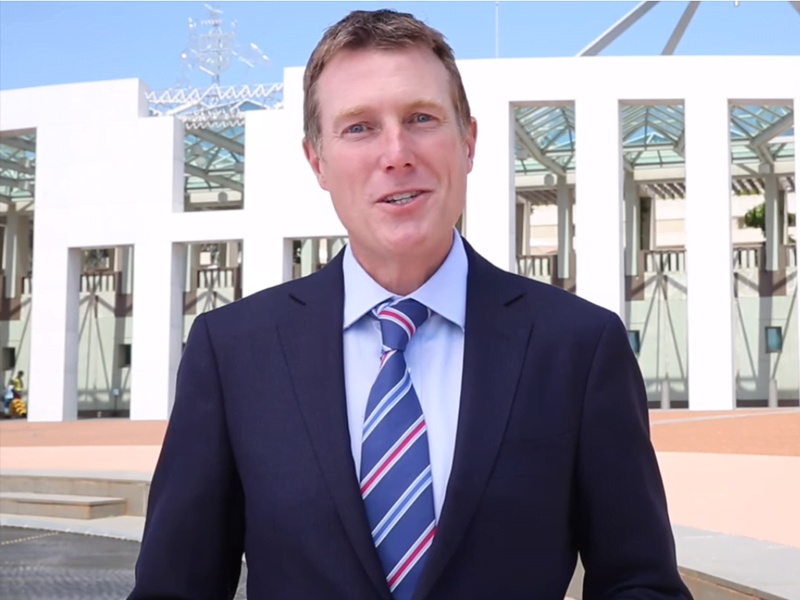Total spending by Australian business on research and development remains at 2012 levels, despite small increases in each of the past three financial years.
A new Australian Bureau of Statistics report found business expenditure on R&D (BERD) was $18.17 billion in 2019-20, slightly below the $18.32 billion that businesses spent in 2011-12 at today’s prices.

The report makes grim reading, especially as the ABS found Australia’s overall spending on R&D – by governments, business, universities and not-for-profits – as a percentage of GDP fell dramatically from 2.11 per cent in 2011-12 to 1.79 per cent in 2019-20.
This is despite Australia already significantly underspending comparable OECD nations, with countries like Germany, South Korea and Switzerland spending more than 3 per cent of GDP on R&D, and outlier Israeli spending nearly 5 per cent.
Industry Minister Christian Porter was prepared to see the glass half full yesterday, noting the recent growth in BERD spending.
“The increase in business expenditure on research and development of 4.2 per cent to more than $18 billion during 2019-20 is encouraging to see, especially given it includes a significant period of time affected by the COVID-19 pandemic,” Mr Porter said in a statement to InnovationAus on Sunday.
“It is also encouraging that this included an increase in expenditure on R&D in the manufacturing sector, particularly as we now rollout our $1.5 billion Modern Manufacturing Strategy.”
Mr Porter also noted that Australia’s total spending on R&D increased in the 2019-20 financial year by $2.5 billion to $35.6 billion – that’s total spending by governments, universities and the private sector.
But Professor Roy Green, a special innovation advisor to the University of Technology Sydney and the author of a seminal report on Australia’s innovation system for a Senate inquiry, is concerned.
He says that while other advanced economies were doubling down on investment in research and innovation, the latest ABS data indicates that Australia has been going backwards.
“The overall picture would have been even worse but for higher education expenditure on R&D increasing by around a third over this period, as both business and government spending flat-lined,” Professor Green said.
“This was largely due to the contribution of international student fees to university revenues, a contribution which can no longer be counted on to support the otherwise strong performance of Australian universities in either research or teaching.”
Professor Green said data also revealed a mismatch of R&D spending between business and higher education, with industry demand mainly focused on engineering and digital technologies, while most Higher Education research funding is concentrated on the health and medical areas.
“Clearly the latter areas are important and have led to the creation of some successful global companies, but in the absence of a coordinated approach, the inadequate provision for new engineering technologies, design and business models goes some way to account for the decline of manufacturing in Australia.”
The chief executive of the newly formed Technology Council of Australia Kate Pounder said tech sector firms were big investors in research and development, particularly in software.
With tech sector activity growing rapidly in Australia, it was not a surprise to see that BERD is highest for the information and computer science field, she said.
“We suspect the reported figure for BERD is lower than the true level of R&D as smaller firms in particular can find it onerous to comply with the extensive documentation and linear processes required for formal R&D in software. That leads to them undertaking it informally,” Ms Pounder said.
The Tech Council welcomed changes to the R&D Tax Incentive scheme that were announced in the May federal budget, and the efforts by the Australian Taxation Office and AusIndustry to issue clearer guidance on R&D for software.
“Australian companies want to undertake R&D and develop new products,” Ms Pounder said. “We’ve shown with companies such as Canva, Atlassian, Afterpay and CultureAmp that the tech we make in Australia is world-class and leads to rapid jobs and growth creation as companies scale.”
“With strong growth in the number of companies and products we’re launching, ensuring the R&D regime is small business friendly is more important than ever.”
Shadow Industry spokesman Ed Husic told InnovationAus it was no coincidence that the contraction in national R&D investment had taken place during the Coalition’s time in office.
He said government had been slow to address industry concerns about the heavy-handed approach to the R&D tax incentive as it applied to software development, which he said contributed to an investment chill within our early-stage innovation community.
“Other than using innovation occasionally as a media prop, the Coalition has actively undermined R&D investment and been content to let us slip down global rankings for R&D activity,” Mr Husic said
“Just look at the signals sent out by a Prime Minister in Scott Morrison who said our national focus should be on Australian businesses adopting technology created elsewhere, instead of supporting home-grown innovation.”
Industry Minister Porter said the government continued to invest in supporting private sector R&D through enhancements to the Research and Development Tax Incentive scheme that came into effect from July 1, as well as through the announcement of a Patent Box in this year’s budget, which he said would incentivise innovative research.
“At the same time, as well as R&D, it’s crucial that Australia improves our ability to turn that research into commercial outcomes, and that’s something the Government is equally focussed on,” Mr Porter said.
Do you know more? Contact James Riley via Email.

